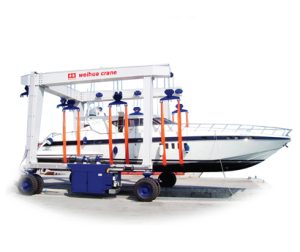
When working with lifting and pulling tasks in industrial, commercial, or even home settings, electric winches and electric hoists are two common tools that often cause confusion. While they may appear similar and sometimes even share components, their purposes, mechanisms, and safety standards differ significantly. Understanding these differences is essential for choosing the right equipment for your application.
Aanlyn kletsElektriese lierhys: An electric winch hoist is primarily designed for pulling heavy loads horizontally. It is commonly used in off-road vehicles, konstruksieterreine, marine operations, and workshops for dragging or repositioning equipment and materials.
Elektriese takel: An electric hoist is engineered for lifting and lowering loads vertically. It is typically used in factories, pakhuise, and production lines to raise heavy machinery, gereedskap, or pallets safely and efficiently.

Winch: Best for horizontal movement. Using it for vertical lifting can be dangerous due to lack of braking systems designed for gravity loads.
Hoist: Designed for vertical lifting. Built with robust braking mechanisms to prevent loads from falling.
Electric Winch: Standard winches may not include fail-safe load brakes. They’re not equipped to hold a suspended load in mid-air safely over time, which makes them unsuitable for lifting.
Elektriese takel: Hoists come with mechanical or electromagnetic brakes that can instantly stop and hold a load in place, even during a power failure—ensuring optimal safety.
Winches often use high-speed motors with planetary gears to maximize pulling power.
Hysbakke feature motors and gear sets designed to provide precise control and high torque at low speed, ensuring smooth lifting and lowering.

Electric Winches are rated for pulling force, usually measured in pounds (lbs) or kilonewtons (kN).
Electric Hoists are rated for lifting capacity, measured in kilograms (kg) or tons, and follow strict compliance with industrial safety standards.
| Application | Use a Winch | Use a Hoist |
| Dragging a vehicle | √ | × |
| Lifting equipment to a mezzanine | × | √ |
| Repositioning a log on the ground | √ | × |
| Loading heavy machinery onto a truck | × | √ |

Technically, a winch can sometimes lift light loads vertically, but it is not recommended due to safety concerns. Using a hoist for pulling can also damage the internal components. Always use each device for its intended purpose.
Although electric winches and electric hoists might look similar, their differences are significant in terms of function, veiligheid, en prestasie. If you need to pull horizontally, go for an electric winch. If you need to lift vertically, always choose an elektriese takel. Understanding these distinctions ensures you not only get the job done right—but also safely.
Ons waardeer u terugvoer! Vul die onderstaande vorm in sodat ons ons dienste by u spesifieke behoeftes kan aanpas.

With the rapid development of water transportation, leisure entertainment and shipbuildi……

Die oorhoofse elektriese draadhyser verteenwoordig die toppunt van hystegnologie, van die ……

Waarom die Weihua Beste elektriese hyser die slim keuse vir jou motorhuis is: Kragkrag Per……

Die elektriese takelkarretjie is doeltreffend, veilig, ligte en klein opheffingstoerusting. Com ……
